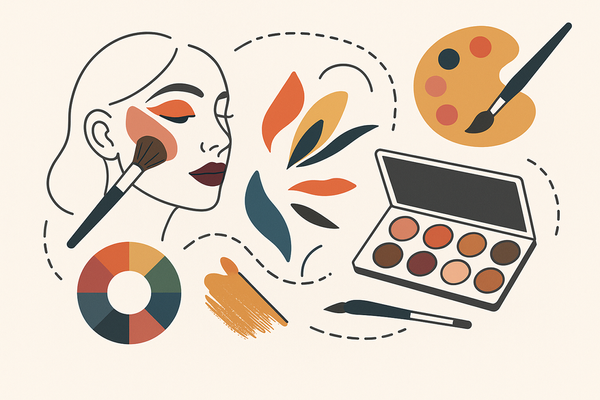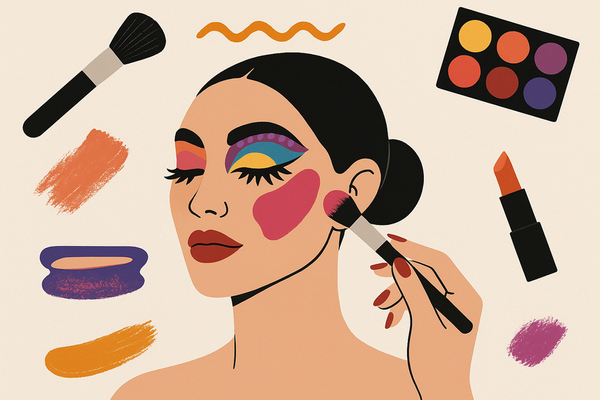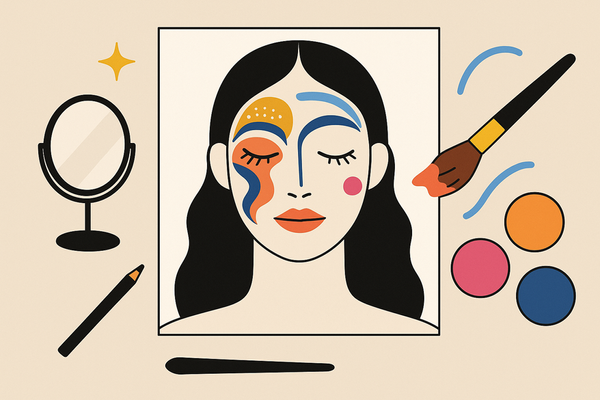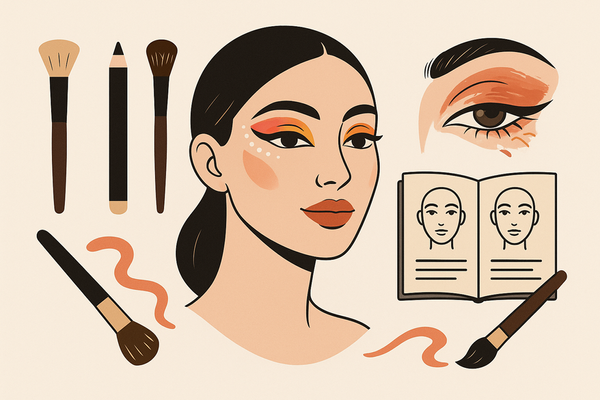Creative Makeup Designs: Transform Your Canvas with Innovative Makeup Artistry
Explore creative makeup designs that turn your face into an artistic canvas, with innovative techniques that redefine beauty and visual storytelling.
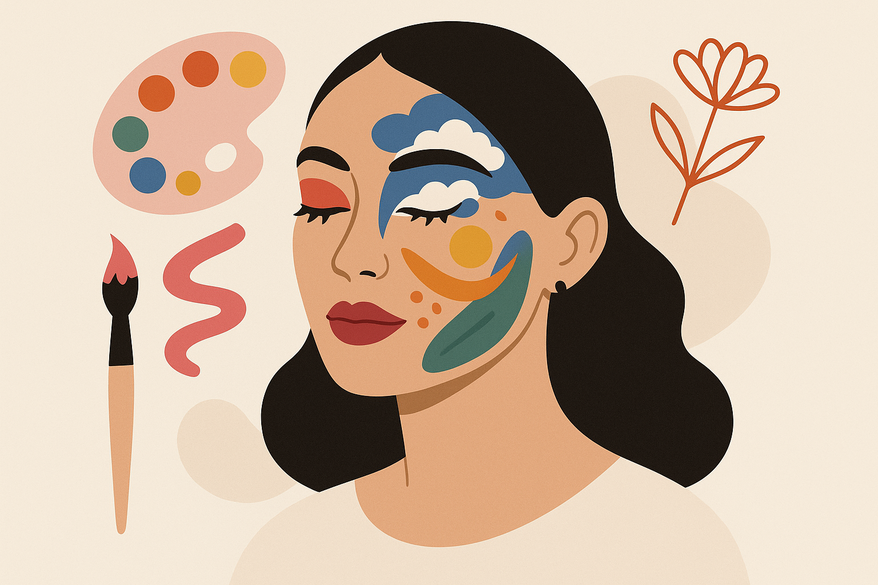
Estimated reading time: 10 minutes
Key Takeaways
- Creative makeup designs turn the face and body into an artistic canvas.
- The art form has evolved from ancient rituals to modern, tech-driven expressions.
- Styles range from avant-garde and fantasy to festival-ready and influencer-inspired looks.
- A curated set of tools, from pigments to prosthetics, is essential for professional results.
- Step-by-step techniques unlock beginner and advanced tutorials to innovate your routine.
- Stay inspired with current trends, and personalize your art through color theory and texture play.
Table of Contents
- Section 1: The Evolution of Makeup Artistry
- Section 2: Exploring Different Styles of Creative Makeup Designs
- Section 3: Essential Tools and Products for Creative Makeup Designs
- Section 4: Step-by-Step Guides and Creative Techniques
- Section 5: Inspiring Ideas and Current Trends
- Section 6: Tips for Personalizing Your Creative Makeup Designs
- Conclusion
- FAQ
Section 1: The Evolution of Makeup Artistry
Creative makeup designs trace their roots to ancient civilizations and have become bold statements in modern culture.
Ancient Origins
- Egypt: Kohl-lined eyes and green malachite for status and protection.
- Greece: White lead-based face paints in theatrical performances.
- East Asia: Rice powder and red pigments in ceremonies and court life.
- Source: Creative Makeup Designs Guide and Design Encyclopedia
20th-Century Cultural Shifts
- 1920s Flapper Rebellion: Dark, smoky eyes and bold lips symbolized liberation.
- 1960s Pop-Art: Graphic eyeliner and pastel shadows inspired by Warhol and Lichtenstein.
- 1970s Punk Neon: Bright pigments, safety-pin accessories, and a DIY ethos.
- Source: Creative Makeup Designs Guide
21st-Century Transformation
- Tech Integration: Airbrush systems and projection mapping create futuristic effects via Virtual Makeup Try-On.
- Social Media: Instagram filters spark holographic and glitter trends in real life.
- Global Community: Online tutorials and virtual masterclasses share cutting-edge looks.
- Sources: Creative Makeup Designs Guide and Shynee Makeup Art Exploration
Section 2: Exploring Different Styles of Creative Makeup Designs
From runway exclusives to festival must-haves, creative makeup spans a diverse range of looks.
Avant-Garde
- Definition: Bold, experimental looks that defy norms, featured in high-fashion editorials.
- Elements: Exaggerated shapes, metallic textures, sharp color contrasts.
- Learning resource: Avant-Garde Makeup Trends
Fantasy
- Definition: Surreal, character-driven designs using prosthetics and dramatic pigments.
- Elements: Silicone horns, face-to-body gradients, story-driven palettes.
- Sources: Design Encyclopedia and Creative Makeup Designs Guide
Festival-Inspired
- Definition: Vivid colors, glitter overlays, and rhinestones crafted for events like Coachella.
- Elements: UV-reactive paints, face gems, sequined accents.
- Sources: Creative Makeup Designs Guide and Shynee Makeup Art Exploration
Boundary-Pushing by Designers & Influencers
- Definition: Mixed-media effects and digital overlays inspired by viral trends.
- Elements: AR filter inspiration, motion-reactive pigments, multi-layer textures.
- Source: Online Makeup Academy Inspiration
Section 3: Essential Tools and Products for Creative Makeup Designs
Precision and safety demand professional-grade supplies and creative kits.
- High-Pigment Eyeshadows & Loose Pigments for vibrant color payoff.
- Precision Brushes, Sponges & Airbrush Systems for flawless application.
- Special-Effects Kits including skin-safe adhesives and silicone prosthetics.
- Unconventional Embellishments like rhinestones, feathers, and magnetic pigments.
- Tip: Choose hypoallergenic formulas to protect skin and ensure performance.
Section 4: Step-by-Step Guides and Creative Techniques
Prep & Planning
- Clean, moisturized skin creates a flawless base. See Makeup Design Application Guide.
- Sketch concepts on a face chart or digital mockup before you begin.
Application Techniques
- Layering & Stippling: Build depth with thin layers and textured stipple motions.
- Sculptural Shapes: Use geometric eyeliners, silicone pieces, or molds for drama.
- Mixed-Media Embellishments: Affix rhinestones and accents with precision tools and skin-safe glue.
Beginner Tutorial: Complementary-Color Geometric Eye Look
- Apply eyeshadow primer to lids.
- Sketch triangles with a light eyeliner.
- Fill shapes with complementary hues (e.g., blue and orange).
- Blend edges with a fluffy brush.
- Add matte white accents for contrast.
- Seal with setting spray.
- Reference: Creative Makeup Designs Guide.
Advanced Tutorial: Airbrushed Holographic Galaxy Design
- Prime skin and apply a neutral base with an airbrush system.
- Use star and moon stencils; airbrush iridescent purple and teal layers.
- Layer fine glitter over wet primer to mimic constellations.
- Add metallic silver liner to accent shapes.
- Finish with a holographic top-coat spray.
- Reference: Creative Makeup Designs Guide.
Section 5: Inspiring Ideas and Current Trends
- Bold Neon Pigments: Day-glow greens and hot pinks under UV light.
- Holographic Textures: Rainbow sheens inspired by AR filters.
- AR Filter–Inspired Effects: Dot matrix stencils and digital patterns.
- Seasonal Motifs: Floral spring accents, metallic summer sunbursts, fall liners, winter gradients.
- Case Studies: Editorial sculptural brows, LED runway looks, special-effects competition winners.
Section 6: Tips for Personalizing Your Creative Makeup Designs
- Experiment with Color Theory: Try teal with marigold for unexpected contrast.
- Mix Textures: Combine glossy, matte, and iridescent finishes.
- Adapt to Face Shape: Customize contour lines and highlight zones.
- Document & Refine: Photograph experiments and adjust for a signature style.
For an in-depth walkthrough, read Mastering Creative Makeup Designs.
Enhance your artistry with AI tools from Makeup Check AI.
Conclusion
Creative makeup designs blend artistry, technical skill, and innovation to redefine beauty. By exploring history, styles, tools, and techniques, you can push the boundaries of expression. Experiment fearlessly, document your journey, and share your masterpieces to inspire others.
FAQ
- What are creative makeup designs?
Artistic applications that use bold colors, sculptural elements, and mixed media to transform the face and body into a canvas. - How can beginners start?
Begin with basic color-blocking techniques and follow step-by-step tutorials like the geometric eye and galaxy designs above. - Which tools are essential?
High-pigment shadows, precision brushes, airbrush systems, and special-effects kits with skin-safe adhesives. - How do I stay inspired?
Follow case studies, experiment with emerging trends—like holographic textures and AR filter effects—and document your progress. - How can I personalize my looks?
Use color theory, mix textures, adapt shapes to your face structure, and refine your signature style through practice.

